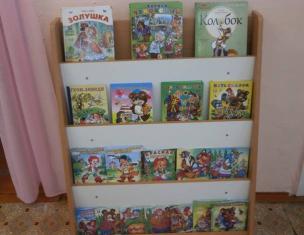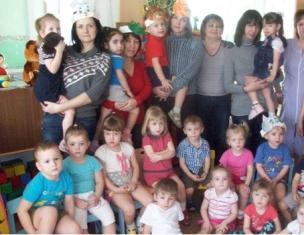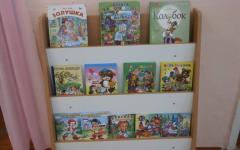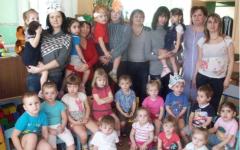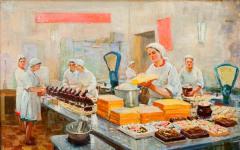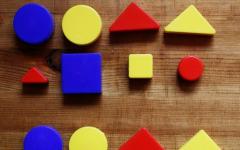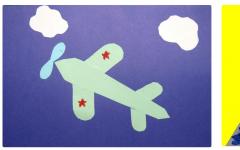Designing from paper is a useful, exciting and cognitive type of children's activity. This is the most popular design variety that opens an infinite scope of fantasy kids. In class in the middle group, dw pupils during work with scissors, glue and different kinds of materials create original, bright crafts. Such activities are closely related to the knowledge of the surrounding world, the development of small motors, speeches and logic, brings up patience in children, preferabity, the desire to achieve the goal, organization and accuracy, as well as the feeling of mutual assistance and the ability to see beautiful around themselves.
Features of paper design in the middle group
Paper - the simplest material for children's creativity. Even the children of the nursery are capable of working with her, and the pupils of the middle group are able to create their first masterpieces. The children of the four-year-old age are happy to take up the design, as the result, that is, a ready-made crawler, they see immediately at the end of work and are proud of them, as well as the opportunity to please their little hands of loved ones and friends. Yes, and parents love and long keep the crafts of babies, be it a bunny of cardboard or mushroom-amoor from a disposable plate.
The child will be happy to please the relatives of his own craft
The task of the tutor in the preschool institution is to arm the kids, skills and skills in working with paper and similar materials, give a push of child fantasy, stimulate the child's desire to design from paper and home, with parents and friends.
Types of paper design
Designing from paper in kindergarten is presented in the following varieties: plane crafts, when the paper blank is glued to the base, and its individual parts can perform above the surface, and the volume products to which work in the Origami technique and the design of the strips are.
Origami is a folding of paper figures without glue and scissors. Paper in this case is the only working tool. This technique develops fine motility, constructive thinking, fantasy. When creating a craft, each action has its own sequence number and strictly follows one after another. After a demonstration, the teacher should offer preschoolers to the printout of the craft execution scheme.
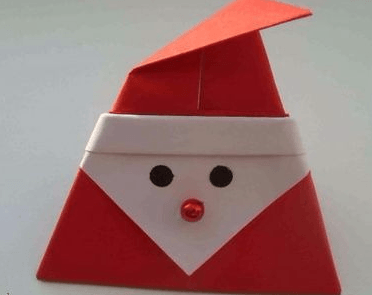
This kind grandfather Frost is an example of a plane applique
Designing from paper is included in the mandatory training program in preschool establishments, classes are held once a month, alternating plane and volume design for the most complete and most comprehensive development of children and the formation of sustainable skills.
Table: Card file to the Node in the middle group of kindergarten
| Month | Theme lesson | Educational tasks |
| September | "Washers" (sample) | Mastering the method - folding the square in half, seeking coincidence of the parties and corners, develop the eye meter. |
| October | "Bunny" (sample) | Learning to close a strip of paper into the ring, glue the edges, create a product of two rings of different sizes. |
| November | "Lanterns" (by showing) | Learning to fold 3 circles in half, glue them among themselves, to act on the appearance of the educator, clearly connecting the halves of the circles (volume). |
| December | "Christmas tree" (sample) | Exercise in the blasting of paper along the contour, scattering paper balls (Christmas tree toys, compiling images from parts on the plane. |
| January | "Booth for a dog" | Continue to teach children to fold the sheet in half, carefully work with glue. |
| February | "Postcard for dad" | Fasten the skills to fold the rectangular sheet in half. |
| March | "Flower" (sample) | Learning to independently perform ready-made jobs, educate accuracy and bring the work started to the end (origami). |
| April | "Basket" (sample) | Fasten the ability to fold the square in half, make cuts, connect and glue them (volume). |
| May | "Turntish" | We learn to make toys for playing with the wind, solely cut the strips, glue to the base of the stick, connect in the center. |
As we can see, the main tasks of traditional design from paper at this age: teach a child to add a square and rectangular sheet of paper in half, combining the edges, smoothing the fold line and make cuts in the places specified in advance. Simultaneously with the development of new skills, which children did not have in the younger group of Dow, continues the fixation of already known: accurate possession of scissors and glue, the use of paper properties (its fitness to twist, fringing, breaking), the ability to work collectively and in pairs.
The above plan contains exemplary class topics, the teacher has the right to change them, focusing on the themes of other educational activities (on the development of speech, familiarization with nature around the world, etc.
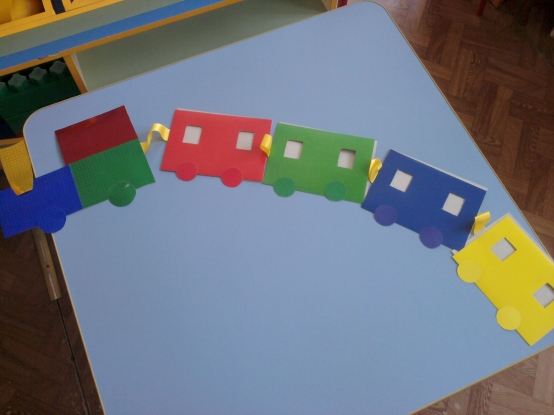
Wagons from folded in half squares of paper can be combined into a fun train
Similar to cars are made by bus, a house, a booth, the body of the cargo machine (the finished cabin is stuck after). The construction of the bunny of the bands can be replaced by the manufacture of a dog, chicken and so on. Instead of a flower in the Origami technique, children can make a Christmas tree, but instead of trees with toys (paper balls) - apple trees with apples, naturally, shifting the time of time.
Works in the Origami technique in the lesson should be so much so that all children can be fulfilled to fulfill them. More complex designs should be taken to the classes of the circle with children. which this type of design especially loved and easily manage. The main thing in the lesson is to create a situation of success for all with a reasonable share of help from the teacher.
Another kind of volumetric paper craft is the design of the strips. Here, for work, children will need scissors and glue. In this way, you can make it possible to make any different animals, as well as other objects (snowman, flashlight, house, well, etc.) To form parts of the body of the animal, the teacher prepares the strips of different lengths and width.
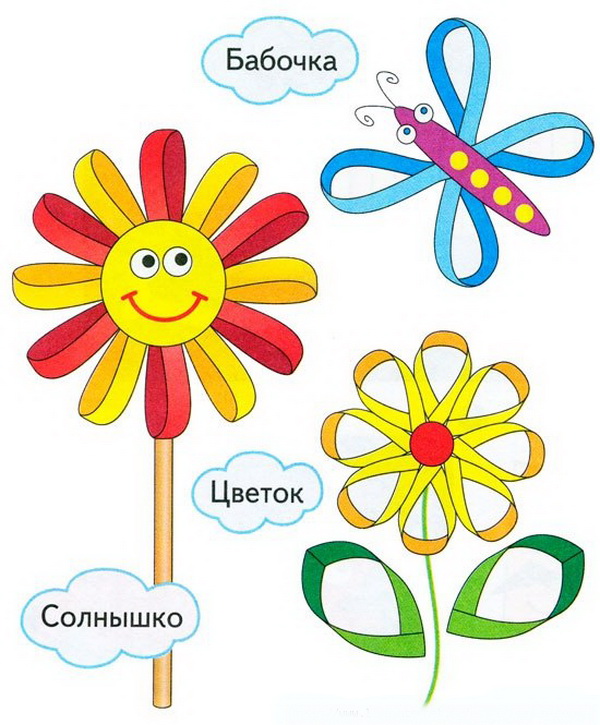
From paper strips you can create a lot of wonderful crafts
The optimal size of crafts and blanks for them
Paper crafts should not be too large. For example, if children are engaged in designing on a plane, then the teacher offers them as the basis of the sheets of paper A5 as the basis. The size of the finished product in this case will be about 8-10 by 10-15 centimeters depending on the method of folding the crafts.
If we are talking about the works in the Origami technique, for example, an aircraft or a boat, then sheets of A4 paper sheets are used.
Works from the strips should not be very large - no more than the palm of the adult. Strip length - from 15 to 25 cm, width in the range of 1-2 cm. Large crafts for children's design group (flowers, snowflakes) are made of bands depending on the expected size of the finished product. In this case, a flexible cardboard should be used, and for better gluing the place to which the glue will be applied, in advance, slightly climb the scissors.
If the crafts are designed for a collective volumetric panel or collage to decorate the group room, their size may be somewhat larger.
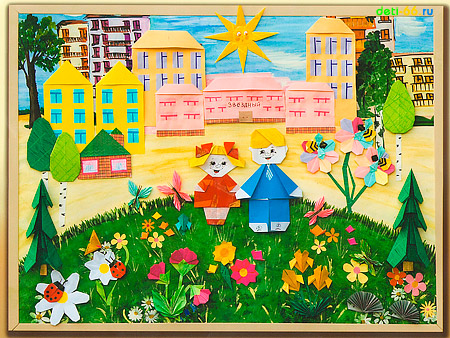
Panel with Origami elements "Our favorite kindergarten" will decorate a group room or the lobby of preschool institution
Materials for design
In traditional design, a conventional color or double-sided paper is used, selecting coloring, respectively, the topic. Now there are sets of paper of unusual colors for wood, stone, sitheria, with a print, and so on). Its products from it are especially beautiful and attractive.
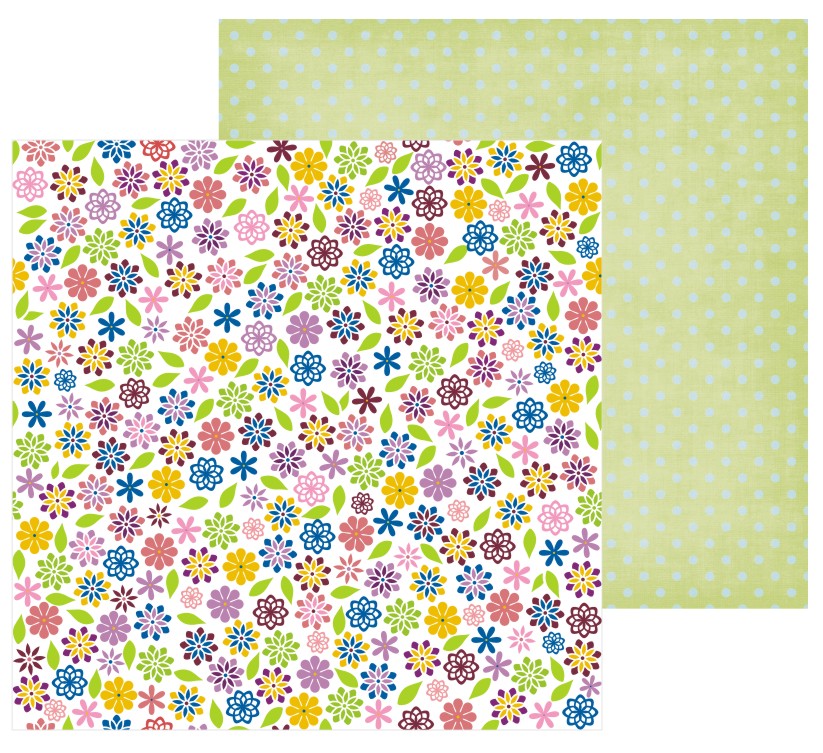
Print paper will live and diversified crafts
The origami technique is used, as a rule, a monophonic paper of bright colors.The color of the material depends on which object is to be depicted: so, the fox and protein are folded from orange paper, a snowflake or a hare - from a blue, a frog - from green.
As for the quality of raw materials, it is better to use glossy or matte wash paper - after flexing, cracks will not be formed. The material must be clean, not crumpled, sometimes appropriate to use both newspaper, journal paper, but it should not be broken when flexing. If the guys have to be instracted for games or drapes, you will need more dense paper: wrapper or wallpaper.
Toys for games with water (boat, steaming, boat) well folded from parchment, wood paper or foil so that the crafts are not deformed when playing.
Planning the design of the strips, the teacher should keep in mind: for such crafts it is impossible to use fine paper, which is easy to me. Too dense cardboard is also inappropriate, because the strips will be badly glued. The optimal version is paper that keeps the form and at the same time glued without problems. For example, dense colored paper cream.
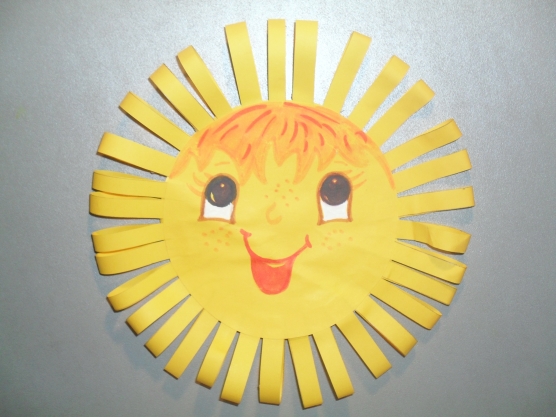
The cheerful sun of paper strips will meet the kids in the morning in the group locker
To crafts from the strips have been better than, the educator can help children help - additionally fix the places of gluing stapler, but so that it is not very noticeable.
Designing from paper is akin to work with the so-called dashed paper of paper origin. These are sleeves that remain from toilet paper, disposable plates and cups from the compressed paper, the remains of the packaging container (corrugated cardboard), beverage packages.
Fantasy of an enthusiastic teacher can turn the bushings in funny rabbits - will only remain to be caught by their colored paper and attach the spout, ears, eyes and legs. Such an exercise, by the way, will benefit - you can add pencils or markers there.
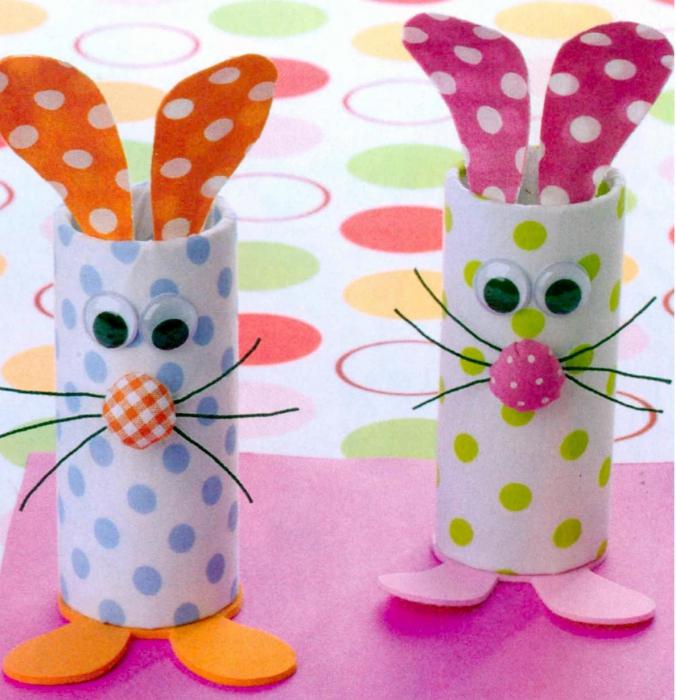
Crafts, the basis of which is a bushing from toilet paper, can be used as a stand under pencils
To design in the middle group, you can use empty match boxes - especially they will be useful to create doll furniture. Or for the gift of his beloved grandmother, which will store trivia in it for needlework.
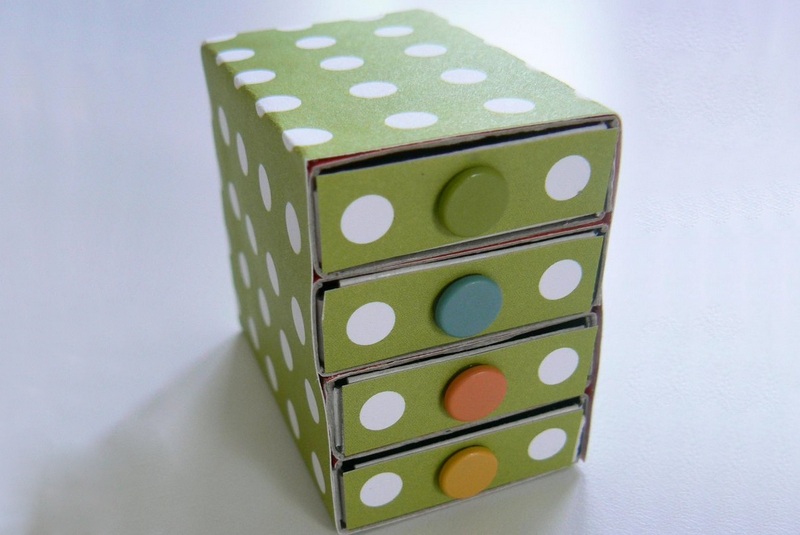
The drawer of the matchbox will be a great place to store buttons and other useful trifles.
You can adapt for work and paper boxes from under milk or juice - for example, make a robot, adding it to the corresponding items. Complementing the composition by cars and buses from folded squares folded in half, children will create a whole city.

Empty box from under juice can easily turn into a multi-storey house
As for the details for decorating and finishing paper crafts, then in the middle group they are harvested in advance. But the preschoolers of this age may well cut the paper on strips according to dotted lines that the teacher outlines.
Using additional techniques when creating compositions
In order for the paper composition to be brighter and realistic, the combination of various types of visual activities (drawing, modeling, applique) is welcomed in the design of the design. This is especially true when creating such crafts like a flower, a butterfly, a fabulous bird, a fish, as it makes it possible to transfer their color painting, using a rich color palette.
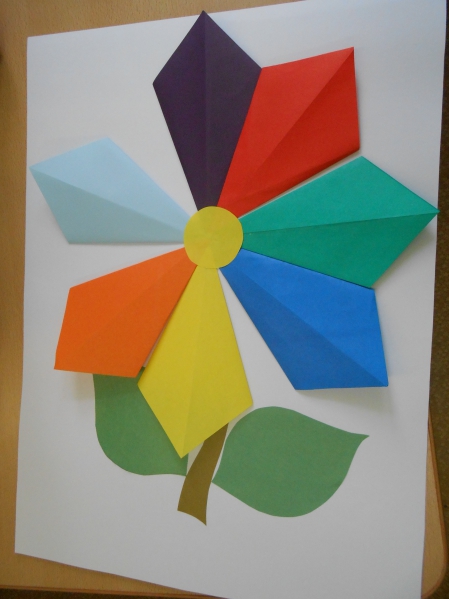
Crafts on the plane "Flowery-SemiChivietic" collected the brightest paints
If the guys create an animal from paper strips, then he can draw eyes, nose and mouth. Transferring the character's emotions, children develop their own emotional sphere and empathy. An interesting solution is to make the same parts from plasticine or appliqué.
Individual approach in design
In the medium group, individual tasks can be given to preschoolers. The guys who quickly folded the paper of an airplane or a boat, can be offered to decorate it with colored pencils or markers. If we are talking about the design of the animal (for example, a bunny), then a quickly coping child can additionally decorate his ears with bows or to additionally make a stand. Additional tasks for quickly managers are given only during the class, and not at its beginning, so as not to emphasize the difference in the skills of preschoolers.
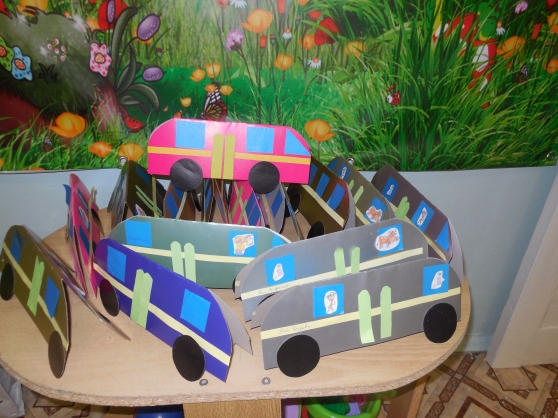
Having made a car, the guys can decorate it with appliqué and draw passengers
Origami classes require careful control and timely assistance of the caregiver, since not only the appearance, but also the form of the product depends on the clear alignment of the angles and the smooth fusion line. Origami, made incorrectly and in love, may simply "not work out." The kid will not see the ready-made result and risks to lose interest in this wonderful art.
Accurate folding origami should pay special attention.
Therefore, an individual approach in Origami is needed. This work is painstaking and requires a lot of attention and patience from the teacher. But if the baby will have to get this type of design, he will take his own enthusiasm origami and in independent activity in kindergarten and at home.
Duration and structure of classes
Designing in the middle group of about twenty minutes and includes such steps:
- The organizational moment is 1-2 minutes.
- Opening conversation (motivating principle) - 3-5 minutes.
- The appearance of work acceptor is 2-3 minutes.
- Independent work of children - 6-8 minutes.
- Collective viewing and analysis of work - 2 minutes.
- The final conversation is 1 minute.
Motivating Beginning Options
Like classes on visual creativity, work on design in kindergarten must begin with a motivating moment. The child must certainly be incentive to productive activities, he must know for himself, why he does one or another cradle. The educator must organize every occupation so that it makes it for the baby a kind of travel to the magic world. A mini-performance is played, in which children take part, chatting with a teacher and any character.
For example, when designing a frog, a sad frog of Quake comes to children, who considers himself anyone who does not fit on Earth. The task of the educator is to tell children about the benefits of amphibians who destroy mosquitoes and flies. And the guys will definitely want to console the frog, make friends with their own hands.
After reading preschoolers, the works of N. Nosov about small inhabitants of the flower city can be designing on the topic "House". The occupation can be started with the appearance of puppet minor. He will tell the children that in the short in the flower city there are no individual houses, and several people live in one room. It is inconvenient, because the husl is engaged in music, the flowers all the time writes poems, Znayka reads his smart books, and the avoska constantly wants to sleep. The educator asks children, as you can help with shorts, and brings them to the idea that you need to make a house for them.
By the way, on the subsequent occupation can be made for brief paper furniture.
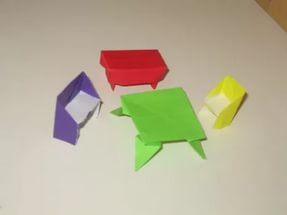
Doll furniture in Origami technique will come in handy for the story game
Most children like to help our brothers to our smaller, take care of them. Therefore, an excellent motivation for activities will be the proposal of the educator to make a feeder for birds from the same cardboard box from under juice or milk. The beginning of such a classes can be beaten - a bird (for example, a stork) comes to the kids (for example, a stork) with a letter in the beak, where it is written that with the onset of cold weather, birds have become difficult to find themselves. It is a good concomitant conversation on the topic: Winter and flighting birds, where birds fly away for the winter, which is offered to the pennate as food.
If preschoolers have to design snowflakes, then the teacher is advisable to spend the target walk in order to observe their forms and diversity, to invite children to consider frosty patterns on the windows.
The theme must necessarily be confined to the corresponding physical attacks, finger gymnastics, poems. Designing in the middle group may well attract both musical skills of children - they can sing a song learned on a musical lesson.
Another win-win motivation option for children - to create your own gift to your own hands. It can be a paper flower for a mother or a handbag from cardboard plates, a plane or a boat for dad.
Abstract design of design in the medium group
We bring to your attention the abstracts of design classes from paper in the middle group DOU.
Table: Node Abstracts for Design
| Author and topic | Tasks and occupation |
| Stovetova V.V. "Production of snowflakes from paper strips" |
Educational tasks: Learn to design a snowflake from paper, work out the ability to work with paper stripes. Developing tasks: develop creative thinking, improve the skill of working with scissors. Educational challenges: to educate interest in natural phenomena, culture of behavior during classes. Integration of educational areas: "Artistic creativity", "Cognition", "Communication", "Socialization", "Health". Demonstration material: doll in the outfit "Winter", pictures of the winter landscape, children's fun in winter (skiing, skating, sledding, snowball games), 2-3 ready-made snowflakes. Distribution material: Paper strips of blue, glue, scissors. Travel course. Motivational stage. The riddle about the winter. The sign on the fields, ice on rivers, the blizzard walks, when it happens? The teacher asks for children to look out the window and call signs of winter. For every answer of preschoolers (on Earth there is snow, the trees are naked, on the people wearing warm clothes, etc.) The teacher demonstrates the appropriate picture. Conversation about winter fun with showing illustrations. Surprise moment: The appearance of the doll of the winter, who heard that she was talking about her and came to visit. Zimushka brought with him riddles about various winter attributes and phenomena (sled, skiing, pattern on glass, snow, frost). Guys guess them. The educator asks children to remember how they looked at the snowflakes on a walk. The guys remember that they consist of rays, everyone has a different pattern, there are no two identical snowflakes. Fingering gymnastics "Snowflake"
The teacher is interested in children, whether they want to learn how to make snowflakes themselves. Of course, they agree.
However, the winter notes that the snowflakes from the guys turned out all the same. Children themselves guess that they forgot to decorate them. The teacher reminds the guys that they still have a strip of paper: with the help of scissors, you need to cut off pieces of different lengths and glue the snowflake by creating a unique pattern. |
| Tikhanova E.N. "Glass" (in the Origami technique) |
This occupation, besides the development of small motility, is aimed at securing the topic "Dishes", activates children's dictionary on this topic. At the beginning of the classes, the teacher makes the guys a riddle about Grandma Fyodor - the heroine of the works of K. Chukovsky "Fedorino Mount": They ran away from dirty cups, spoons and pans. She is looking for them, calling and the tears is pouring on the road. Who will give grandmother? The teacher demonstrates an excerpt from the eponymous cartoon (the beginning, when the dishes ran from Fedor) and asks to call the dishes, which ran away from the heroine. Since the items escaped because Fedor did not follow them, then the educator proposes the guys to teach grandmother to take care of the dishes. For this purpose, finger gymnastics "helpers".
The educator reports to children that they helped Grandma Fedore - the dishes returned to her. |
| Moroz A.F. "Bee hive" |
At the lesson, preschoolers create a craft based on the harmonica of paper, complementing it with the necessary details. In addition, children fix the skill cut from a square round shapes, improve the technique of symmetric cutting from a sheet of paper, folded twice. The occupation has an unusual motivation - the educator draws attention that one of the children (for example, Vasya) fell ill. A small conversation should be on the topic: What feels a sick person (it hurts him, bad, lonely, sad). And to make you nice, raise his mood, teacher with children decide to make a gift from paper. Another mini-conversation on the topic "Whether there was always paper." The tutor briefly tells the guys about how the paper appeared on which everything they write and draw and draw (the story is accompanied by a presentation on the screen). The teacher summarizes the conversation that you can make wonderful toys from paper, for example, a house for bees - hive. A paper blank is demonstrated - hive, and children are invited to settle it with bees. This will be a gift for Vasi. A paper bee is considered, a pedagogue made in advance, its structure is discussed (torso, head, wings). Stages of creation: Make a harmonica of two strips of paper (yellow and black color). The head is cut out of the yellow square by rounding the corners. Wings are cut out of paper folded in half. At the end, all the details are glued. Fizkultminthka is carried out before the productive activities of children: Our bees flew Collect nectar with pollen. Zhu, zhu-zhu. I'm circling over the colors. Although our bee and small, But it is great. A little time will pass And there will be the sweetest honey. |
Program options mug on origami in the middle group
Designing in the Origami technique in the medium group DOU is intently carried out in the form of a circle work. Preschoolers 4-5 years old with great interest crawling crafts from paper, which subsequently use in their games, theatrical stages. They will also be a wonderful gift for the holiday to relatives or friends.
![]()
Origami crafts can be used in the game
Children react very positively, when the toy they did with their own hands performs real functions: the boat sails on the water, the airplane flies, the turntable rotates in the wind.
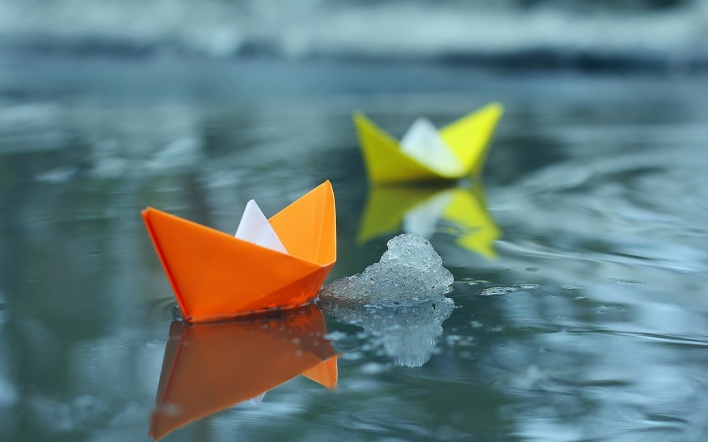
Favorite ships from childhood, too, made in Origami technique
Table: Card Schedule the Mug "Magic Origami"
As an example of the subject of classes, we give a card file to the "Magic Origami" circle (tutor Molchanova OV). Classes are held 2 times a week.
| Month | Subject | Content |
| September | 1. Fancy with origami. 2. Visit the square. 3.D. 4.Blin. 5.GRIB. 6. 7.This. 8.Lag. |
To introduce children with a new type of art "Origami". To acquaint with the conditional signs and the main techniques of folding paper. Teach children to fold a rectangular sheet of paper diagonally, cut off an excess part, getting a square. Using the basic form of a "book", make a house. Using the basic form "Triangle", make a house. |
| October | Basic form "Triangle". 1. Package. 2. Lisa. 3. Sale. 4. Kitten. 5-6.Charmaches. 7-8.Muha. |
Learning to add a square sheet of paper diagonally, find a sharp angle, make the fold "Lightning". Intriprate the triangle in half, omit sharp angles down. |
| November | 1-2. Basic form "Air Snakes". 3-4.composition "Two merry goose". 5. 6. Carrot. 7-8. Preparation and staging of a fairy tale made of toys. |
Using a new base form, learning children to make parts of geese models, connect them in a specific sequence using the application, create a collective composition. Teach children using various origami receptions, create a composition of the "Autumn Vintage" composition. Develop a fantasy in children, the ability to beat your crafts. |
| December | 1-2. Basic shape "Sandy". 3-4. New year postcard. 5-6. Snegovik. |
Teach children to fold a square sheet of paper with a new way, following verbal instructions of the educator. Connect details into a single whole (fir bump), make the New Year's postcard. Teach children turn paper in different ways, to make soft folds, connect the details among themselves, use in one work the paper of different types (soft corrugated). |
| January | 1-2. Basic form "Door". 3-4.Snew. 5-6. Christmas tree 7-8. Christmas tree in the snow. |
To acquaint children with the new basic form "Door". Learning to find corners on a sheet of paper, carry the upper corners, glue ready-made details to each other in the middle. To acquaint children with a new basic form and models, in the manufacture of which it is used. Learning to fold paper with a new way, fasten the ability to find and call corners. Fasten the skills to independently fold the basic form "Triangle", prepare the workpieces on a specific topic, connect the parts into a single integer, create a composition of the winter forest. |
| February | 1-2.Dound napkins. 3-4.Sames for dad. 5-6. Models based on the square. 7-8. Heart. Valentine on the stand. Exhibition of children's work. |
Teach children to work with a paper of different quality, put it on the verbal instructions of the educator. Tightly releasing the napkin, squeezing all the layers and paint in the form of a swan tail. |
| March | 1-2. Flowers for mom "Tulips". 3-4. Funers for a festive table. 5-6. Rose from napkin. |
Learning children to fold paper in different ways, from a familiar base form to add flower petals, connect the details, overlapping one on the triangle of another, combining the top of the corners and the side of the parts. Tightly bother the napkin, squeezing the layers and straighten in the form of rose petal. |
| April | 1-2.Creak. 3-4. Parohod. 5-6. Root fish. 7-8. Sailboat. |
Teach children to make blanks using different basic forms. |
| May | Summarizing. | Registration of the album of children's work for the period of study. Developing communication skills and ability to coordinate their interests with the interests of other children. |
Table: Card Schedule the Origami Circle "Magic Paper"
Another option of the card files is the "Magic Paper" circle (Tutor Pokrovskaya P.A.). Classes are held 1 time per week.
| Month | Subject | Goals and objectives |
| September | Paper fairy tale | To acquaint children with the properties of paper, it is features, use and use in children's creativity. |
| Fairy tale square | Introduce children with crafts from paper. View the types of bending, teach to find a fold line, angle, side. Secure knowledge of geometric figures. Develop imagination, resourcefulness. | |
| Postcard | Teach children to fold the square in half, find the fold line, stroke her. Application postcard design. Development of fantasy and creativity. | |
| Fairytale house | Teach children to convert squares in the house: base and roof. Use artwork; Run the windows, door and pipe from rectangles. Educating accuracy and progress, bring the work started to the end. | |
| October | Cheerful triangle | Teach children to fold a triangle from the square: combining opposite angles, stroking the resulting folding line. Develop fantasy. |
| Bulk apple | Secure the knowledge of children about fruits and their forms. Teach to find the square of the square, bending the corners in one direction, creating an apple image. Develop a shallow motility of hands. | |
| Butterfly | Secure the skill to add a triangle from the square, combining opposite angles, stroking the resulting folding line. Teach to curb the resulting opposite angles in different directions. Cause a desire for creative design crafts. | |
| Caterpillar | Teach children to make the caterpillar of five squares glued together, bending the corners to the center. Develop attention, fine motor skills, skill gently work with glue. | |
| November | Autumn carpet collective work | Create emotionally creative atmosphere. Teach children bending small and big corners., Creating a leaf image, beautifully placed on a sheet. Develop a shallow motility of hands. Relieve a sense of collectivism. |
| Fungus | Secure the knowledge of geometric figures, the ability of children to fold the square, getting a rectangle and a triangle. Clearly stroke the fold line. To acquaint with the rules of safe use of scissors. After the explanation to offer independently performing the crawl - mushroom. | |
| Pyramid | Teach children to flexing corners of different sizes. Develop the ability to find a larger ring from the data. Gently use glue. Eat independence. | |
| Christmas tree toy | Teach children to fold the circle in half, stroke the folding line, find half the circle, which must be lubricated with glue and glue with a half other circle. Develop a sense of rhythm. | |
| December | Carved snowflake | To acquaint children with the basic form "Air Snakes". Develop creativity and fantasy, collecting snowflakes from parts. Gently use glue. |
| Elegant Christmas tree | Secure the skill to fold the basic form "Triangle". Position the resulting triangles with each other since more. Decorate the festive Christmas tree with colored lanterns prepared by a soft paper twisting. Develop fine motor skills, fantasy and creativity | |
| January | Aquarium fish | Secure the ability of children to fold the basic form "Triangle", combine sharp corners, carefully stroke the folding lines. Remember the rules of safe use of scissors. Decorate the handicraft to the applique. Develop attention, creativity. |
| Winter impressions | To form skills to perform crafts from paper strips. To connect the edges of the white stripes and convert them into two balls - parts of a snowman, made of green to make "droplets" - branches of the Christmas tree. Develop the ability to find equal long strips. Educate patience and preferably. | |
| February | Ship | Remember the preparation of the basic triangle form. To teach children to curb part of the triangle, carefully stroking the folding line, turn the bent part outward. Develop attention, artistic taste descending by crafts. |
| Sailboats in the sea | Teach children to tear down long strips and form the waves of them, gently use glue. From the square to make a sailboat by the method of addition of the square diagonally. With the help of scissors, cut half a diagonal and get the resulting triangle. | |
| Airplane | Improve the skills of a neat folding of a square into a triangle, clearly stroke the folding lines. Learn to flex the corners in opposite sides | |
| March | Flowers from snowflakes as a gift for mom | Teach children to form a composition of flowers that are performed from two snowflakes, connected in pairs, and leaves from strips connected to the droplets. Develop an artistic taste, a feeling of color. Call a desire to work yourself. |
| Bookmark | To acquaint children with the basic form of "sweetie", collect and glue a bookmark from "candy". Develop imagination, creativity, independence, diligence, fine motility hands. | |
| Tsvetics - Sevenisweetics | Recall the sequence of the basic form of "sweetie", strives for independent execution. Secure the name of the parts of the blooming plant. Call a desire to perform work yourself. Develop purposefulness, imagination, artistic taste | |
| April | Cheerful frogsonok | To teach children to fold the frog: folded a triangle from the square, get the sharp corners towards each other so that the ends are crossing up, and the same needles beg in opposite sides. Develop attention, perfection. Application to draft handle. |
| Glass | Teach children to fold the cup using famous additions of addition, carefully stroke the fold line. Develop attention, fine motor skills, memory. | |
| Chicken - Pestrushka | Secure children's knowledge about poultry and their cubs. Using the basic form "Air Snakes" to make a chicken, learn to bending small corners, decorate the applique. To bring up independence, faith in your strength, resourcefulness. | |
| Kite | Secure children's knowledge about the basic form "Air Snakes", bending the angles to the fold line. Develop attention, perfection. Arrange the applique | |
| May | Bunny | Teach children to fold the bunny using the basic form "Triangle", gently use scissors. To carefully listen to the explanation of the sequence of craft. Develop a shallow motility of hands. |
| Spring bouquets | Based on the basic form "Triangle" to teach the boutons of tulips and irises, leaves. Teach composition composition. Develop an artistic taste, imagination, attention. | |
| Bird | Recall the performance of the basic form "Air Snakes", notice the authentication of the execution. Improve the skill of the lifting of a small corner, bending the corners in opposite sides. Remember the rules of safe use of scissors. Develop attention, perfection. |
Interesting ideas: finished products and patterns
Fantasy of pupils and teachers of kindergartens really does not have borders. A number of original and easy-to-fulfill ideas deserve attention.


